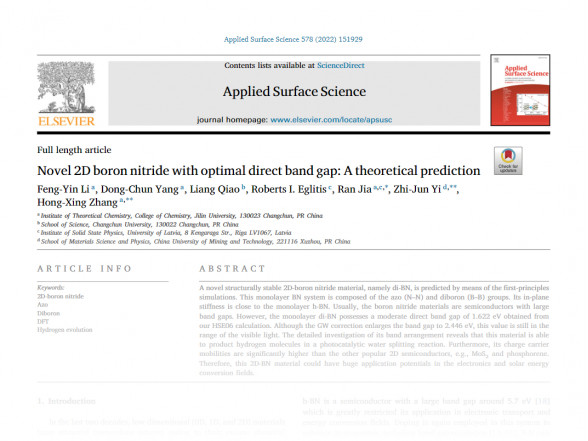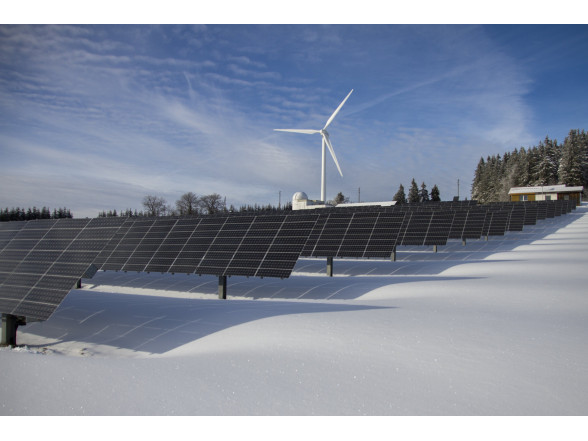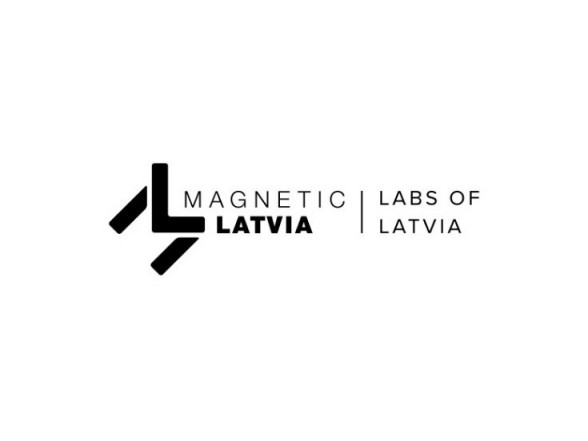Scientific journal Applied Surface Science (IF 6.707) in its volume 578, which is still in the progress of making and its due date of publishing is 15 March 2022, has already finalized some of the articles and made them available online. One of them is an article “Novel 2D boron nitride with optimal direct band gap: A theoretical prediction” (DOI 10.1016/j.apsusc.2021.151929). Leading researcher of ISSP UL’s Laboratory of Computer Modeling of Electronic Structure of Solids Dr.phys. Roberts Eglītis is among the authors of the article. Other co-authors: Feng-Yin Li, Dong-Chun Yang, Liang Qiao, Roberts Eglitis, Ran Jia, Zhi-Jun Yi, Hong-Xing Zhang.
A novel structurally stable 2D-boron nitride material, namely di-BN, is predicted by means of the first-principles simulations. This monolayer BN system is composed of the azo (NN) and diboron (BB) groups. Its in-plane stiffness is close to the monolayer h-BN. Usually, the boron nitride materials are semiconductors with large band gaps. However, the monolayer di-BN possesses a moderate direct band gap of 1.622 eV obtained from our HSE06 calculation. Although the GW correction enlarges the band gap to 2.446 eV, this value is still in the range of the visible light. The detailed investigation of its band arrangement reveals that this material is able to product hydrogen molecules in a photocatalytic water splitting reaction. Furthermore, its charge carrier mobilities are significantly higher than the other popular 2D semiconductors, e.g., MoS2 and phosphorene. Therefore, this 2D-BN material could have huge application potentials in the electronics and solar energy conversion fields.
Applied Surface Science covers topics contributing to a better understanding of surfaces, interfaces, nanostructures and their applications. The journal is concerned with scientific research on the atomic and molecular level of material properties determined with specific surface analytical techniques and/or computational methods, as well as the processing of such structures.



